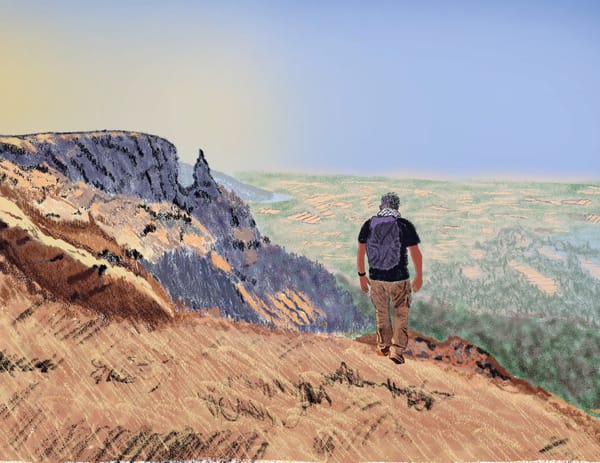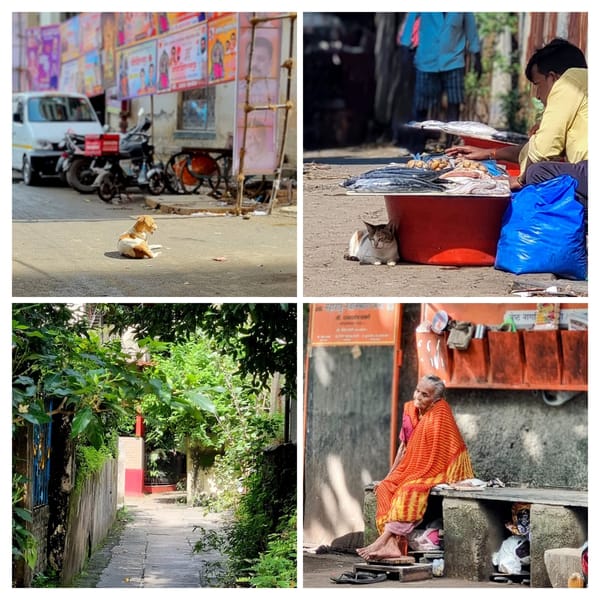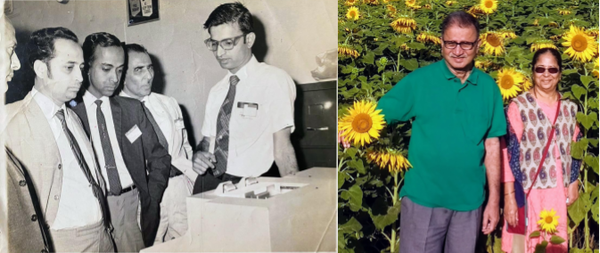Trek to Gumtara Fort - a forgotten historical site
Gumtara is a lesser known fort located in the Tungareshwar sanctuary, 13 km north east from Kamandurg Fort and 24 km south east from Takmak Fort
There is no record of who built this fort. The first reference to this fort was in 1689, when news of Sambhaji's (Shivaji's son) capture reached Matabar Khan - the Mughal subhedar of Nasik, he took the opportunity to march south to capture Mahuli Fort and Gumtara (then known as Gotara) fort as well as surrounding areas all the way up to Kalyan (ref)
Having already visited both Kamandurg Fort and Takmak Fort, it was time for me to trek to Gumtara.
I set out on a rainy weekend in September 2016 via Bhiwandi on the State Highway 848 towards Wada. I turned off the highway at Dugad Phata towards Dugad village that is one of the base villages from where one can trek to Gumtara.
I reached Dugad village and asked around for directions to the fort. I was slightly taken aback when the villagers reprimanded me for wanting to trek up the fort. On further inquiry, they told me that just a year back, a lone trekker had ventured up the fort and had a fall and was only found a few days later, much too late to save him! Not a very good start to my adventure!
Taking heed of their warning, I asked if someone could accompany me to the fort. They directed me to the home of Gawari. Turns out that he had just returned from a night shift as a security guard at a bank nearby. However, he would not let me go alone, and took me to his brother's house nearby.
His brother Ravi had gone out to finish his morning chores and we waited till he got back. The two cats at his house could not contain their curiosity and came out to peer at me inquisitively.
After Ravi got back, we had a hot cup of goat's milk and set out to climb the fort. Gawari's son Santosh insisted on accompanying us and his friend Pankaj tagged along too.
Not too far from their house, we stopped at a rocky patch of land where they showed me two small depressions in the rock that looked like foot prints. They claimed that these were the footprints of Ram and Sita when they passed by during their 14 year exile in the forests of India (ref: Ramayana)!
Soon we reached the base of the mountain and started climbing through the jungle. To my pleasant surprise, the entire jungle was full of Karvi flowers - the purple colored flowers that bloom only once in 8-10 years! (ref)
The path was covered with the thick undergrowth and I realized that there was just no way I would have managed without their help!
The path was lined with wild flowers and all the fallen branches were covered with fungi. Ravi and the two kids carried sticks with which they cleared the path and I followed them closely behind.
I had worn new trekking shoes and as the path climbed steeper uphill, it was extremely slippery and my shoes did nothing to stop the slide! My three guides on the other hand seemed unperturbed by the slippery path as they were barefoot or with just rubber slippers! I decided to follow suit and got off my trekking shoes and tied them to my backpack and proceeded bare foot.
We then made rapid progress and soon saw the fort ramparts. However, there was still a small steep climb that was extremely slippery before we reached up to the fort.
After a slippery climb up, we finally reached the fort. This fort does not have a rampart all around. There are small sections of stone construction near this entrance, but elsewhere they have either disintegrated or were not built due to the steep slopes.
Where the entrance was supposed to be, there were a ruins of a stone archway and this stone with a round hole which my guides claimed was the hinge of the doors that once guarded the fort.
Santosh was ever ready to pose for a photograph. He was such a lively kid - he kept a constant chatter while we climbed, talking about his school, his village, and how much fun they had climbing the fort during summer and that I had come at the wrong time. He also wanted to know everything about me.
This wedge shaped stone was evidently the keystone of the arched gateway. A keystone is the final piece placed during construction and locks all the stones into position, allowing the arch or vault to bear weight. In both arches and vaults, keystones are often enlarged beyond the structural requirements, and often decorated in some way (ref)
Next we visited the a location not too far from the entrance where there are several water tanks dug into the rock. Thanks to the rains, all the tanks were brimming with water.
This is the biggest tank and Ravi tried reaching the bottom of the tank with the stick he was carrying in his hand but could not do so... the tank seems to be at least 6-7 feet deep! I was tempted to take a dip in it, but they advised me against doing so as people use the water for drinking.
We then climbed further up the hill towards the temple. There were still Karvi flowers around at this height, but they started waning further uphill.
The temple was just a temporary tarpaulin wrapped over some sticks protecting the deity within. Next to the temple was a rectangular pit that looked like another water tank for rain water harvesting. However, there was no water in it.
The idol was in pieces and only the bottom part seemed to be present. My guides told me that a local self styled "sadhu" had stolen the rest of the idols from here and installed them at his "ashram" at a village nearby.
Ravi noticed a wild banana plant growing inside the tank. Santosh immediately jumped into the tank and set about chopping the plant to get hold of the stem.
They brought the stem out and then cut off all the leaves to expose the core of the stem.
They showed me the structure of the wild banana flower.
After peeling off the skin of the stem, the inside was a juicy, slightly sweet core that was divided up and shared amongst us four trekkers who relished the fresh snack!
Next, we climbed further uphill to go to the peak of the hill to try and get a view of the surrounding countryside.
We reached the peak and I clambered up to the rock to try and get a nice view. It was foggy everywhere so the chances of getting a view were slim
But it was windy, and the wind was blowing the clouds around. For one tiny moment, the clouds parted to give me a glimpse of the Usgaon lake shining behind the mountain to the north!
And to the west was the rest of the Tungareshwar sanctuary and the hills we saw were probably part of the Kamandurg Fort
This Google Earth photograph shows an aerial view where one can see the Usgaon dam and lake to the north west, with Ganeshpuri and Vajreshwari - the famous temple towns, the river Tansa flowing in the valley, and another lake Lohape to the north east.
Satisfied by the few glimpses between the clouds, we decided that it was pointless to wait for the clouds to be any kinder, and decided to call it a day and return down to Dugad.
Santosh led the way down and we followed him. There is no better feeling than to be trekking in the monsoon - the shiny green grass, the mountains shrouded in clouds and the cool fresh air are an addiction that is difficult to get over!
But the adventure was not yet over! We visited another place along the steep inclines of the mountain to the west to locate a fresh water stream that provides water all year around. Santosh pointed to the location of the stream.
A mandatory photograph with Santosh to remember him by...
... and another with Ravi and Pankaj... notice my bare feet! The climb down was quick. I was not as good as them in trekking bare foot, and had a couple of slips that had me fall on my bottom, much to the amusement of Santosh and Pankaj who could not stop laughing at how funny I looked.
When we reached Ravi's house, his family was kind enough to give us another glass of hot goat's milk and a fresh cucumber with salt. We took a group photo to remember the great adventure, shared mobile numbers and then I headed back.
Santosh and Pankaj accompanied me to the school in Dugad where I had parked the jeep. One last photo of the kids who were my guides for the day!
Thankfully safe after a slippery trek up and down Gumtara Fort, I drove back via Vajreshwari to take a lunch break. Amazing adventure weekend!



